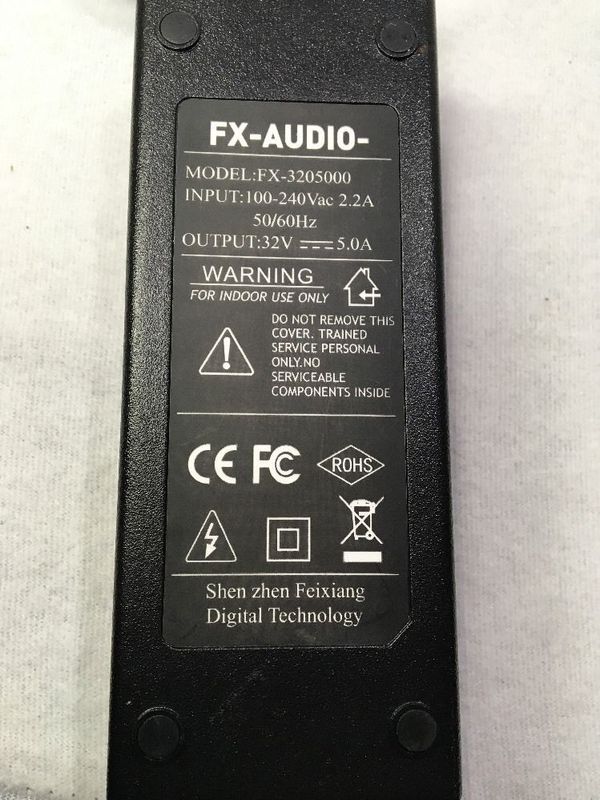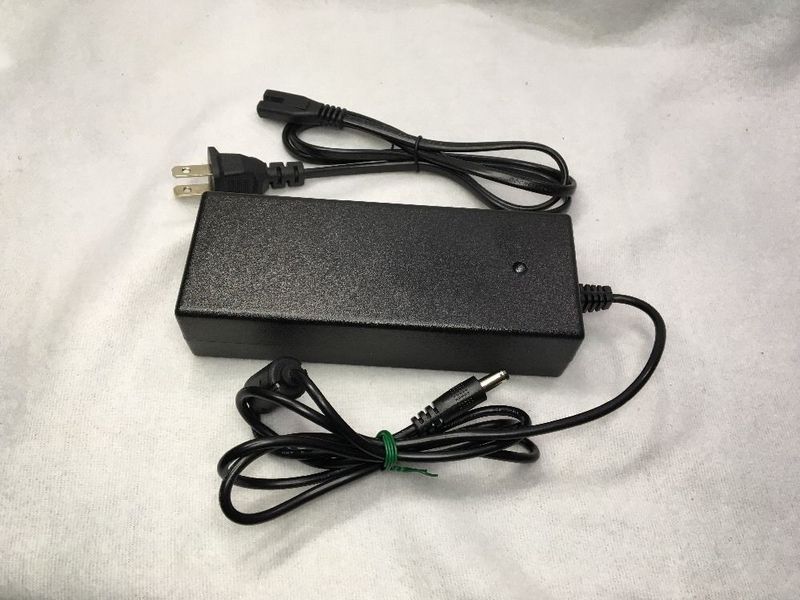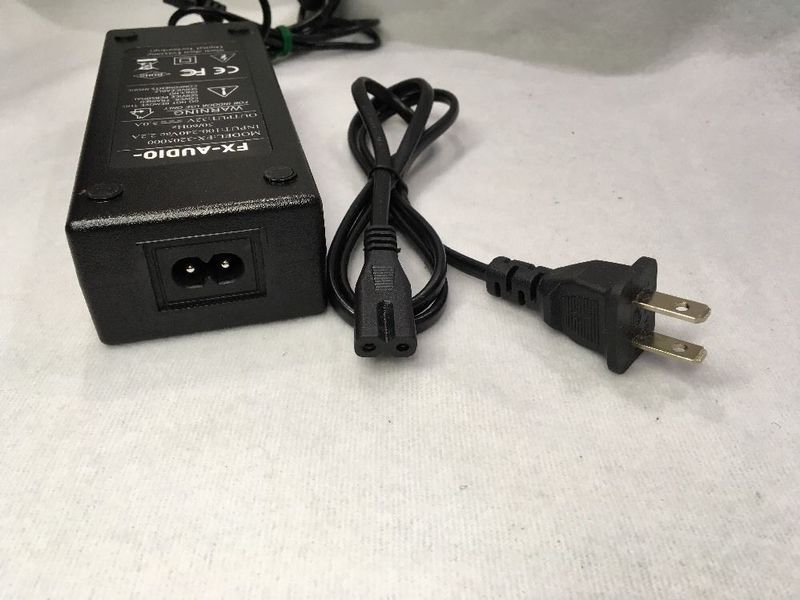I don't recommend a low amp power supply, but music power is nowhere as much as rms power. You can get away with a 72w (rms) power supply as long as output capacitors can support the peaks you need. More, the rated power of an power supply is a continuous power delivery, the peak can be much more.One of the reasons to choose a TDA7498 is that it can deliver ~50W/channel before distortion starts creeping up. To do that, it needs a ~36V supply, which that is. But that 36v supply needs to be able to deliver >100W, which the one you linked to makes no claims of being able to do.
So, yeah, the amps are too low.
To have 100w peaks (without "significant" distortion) the music is probably below 50w rms - of course, that depends on the type of music.
That said, buy the best one you can, but don't go anal about that.
In the end, all we have is the rated power of the power supply. We can make assumptions about what its peak power delivery will be, and those assumptions may be true of most such SMPS bricks, but they might not be true of specific models.
From what I can tell, most of the cheap commercial Class D amps from places like SMSL ship with bricks rated at 75-100% of the nameplate power of the amp, (ie 240W brick for a 160wpc amp, or a ~100w brick for a 50wpc amp).
From what I can tell, most of the cheap commercial Class D amps from places like SMSL ship with bricks rated at 75-100% of the nameplate power of the amp, (ie 240W brick for a 160wpc amp, or a ~100w brick for a 50wpc amp).
So these are the 2 I'm looking at. Like I said I'm on a tight NY budget, so one of these will have to do. So which one will give me the most power, easp/jerms?
https://www.amazon.com/gp/product/B0150ZYHOO/ref=ox_sc_act_title_1?ie=UTF8&psc=1&smid=A2OCOGC9B25845
or
https://www.amazon.com/gp/product/B01H50J0NA/ref=ox_sc_act_title_6?ie=UTF8&psc=1&smid=ARVS18RS1K4U1
Jerms I already have a Dayton 1200 sub that I can use.
Going by the eBay ad.... Which may be a massive assumption!
They recommend a 24V PSU above 5A.... So the 24V, 6A one.
If that's not giving enough then maybe get a DC/DC boost converter off eBay and raise the input voltage to 30/32/34V from the 24V off the SMPS.
J.
With 8Ohm speakers, you'll really need a higher voltage supply to use the board to the full extent of its capabilities.
Based on the TDA7498 datasheet, a 24v supply can drive ~46W/channel into 8 ohm speakers, with 10% distortion (THD), which is way too much. I'd guess you'd only be able to do ~30W/channel while keeping THD below 1%.
With a 36v supply, it should be able to keep distortion under 1% up to ~60W/channel. At that level though, I think a 36v 2a supply would be too small. You'd want at least 2x the power current and power, so 36v, 4A (or maybe 32v 4.5A).
Again, this assumes you picked up a TDA7498 because you actually want/need the power it can deliver. There is nothing wrong with running it of a 24v though, if you don't need its full capabilities. In that case, the 24v 6a supply you linked to earlier should be fine.
Based on the TDA7498 datasheet, a 24v supply can drive ~46W/channel into 8 ohm speakers, with 10% distortion (THD), which is way too much. I'd guess you'd only be able to do ~30W/channel while keeping THD below 1%.
With a 36v supply, it should be able to keep distortion under 1% up to ~60W/channel. At that level though, I think a 36v 2a supply would be too small. You'd want at least 2x the power current and power, so 36v, 4A (or maybe 32v 4.5A).
Again, this assumes you picked up a TDA7498 because you actually want/need the power it can deliver. There is nothing wrong with running it of a 24v though, if you don't need its full capabilities. In that case, the 24v 6a supply you linked to earlier should be fine.
Just measure the mean power your amplifier is using with your favorite tracks...In the end, all we have is the rated power of the power supply. We can make assumptions about what its peak power delivery will be, and those assumptions may be true of most such SMPS bricks, but they might not be true of specific models.
From what I can tell, most of the cheap commercial Class D amps from places like SMSL ship with bricks rated at 75-100% of the nameplate power of the amp, (ie 240W brick for a 160wpc amp, or a ~100w brick for a 50wpc amp).
I prefer not to kill flies with tanks, that's a teaching from my engineer degree.
See reviews of top commercial amplifiers, see rated power compared with single channel drive rms power (almost always equals rated power) and all those 5.1 or 9.1 channels driven simultaneously... (figures of 1/4 - 1/5 rated power are frequent...).
RMS power is not the right way too rate audio amplifiers because we don't listen to sinusoidal waves, full power, all that much...[emoji2]
As I said before, you can/should buy the best one you can, but is not really necessary. It just brings peace of mind if we are unsure.
About 3 watts RMS average musical power, in fact. That's on music recorded fairly loud, like typical modern CDs. Could run as much as 10 watts RMS, in really slammed, compressed music. That would be LOUD.To have 100w peaks (without "significant" distortion) the music is probably below 50w rms - of course, that depends on the type of music.
My experience with lots and lots of Class-D amps is that the PSU does make a difference. After all, it's 50% of the amp. For a 24V supply and 6 or 8 ohm speakers, 4 Amps is plenty. If you get down into the 1 or 2 amp supplies, you will hear the difference. It will work, but won't sound as full as the high current supplies.
Are you sure the 36V supply isn't pushing the chip and the board a little too hard?
I don't have much experience, I take it for sure. But rated power is only half of the equation.About 3 watts RMS average musical power, in fact. That's on music recorded fairly loud, like typical modern CDs. Could run as much as 10 watts RMS, in really slammed, compressed music. That would be LOUD.
My experience with lots and lots of Class-D amps is that the PSU does make a difference. After all, it's 50% of the amp. For a 24V supply and 6 or 8 ohm speakers, 4 Amps is plenty. If you get down into the 1 or 2 amp supplies, you will hear the difference. It will work, but won't sound as full as the high current supplies.
Are you sure the 36V supply isn't pushing the chip and the board a little too hard?
As you said, peaks can take a hit if power supply doesn't provide current fast enough, no matter how many amp it can deliver. A low ESR capacitor can help a lot.
As voltage is concerned, ST states 39v as maximum *operating* voltage.
The chip max is 45v, but applications cannot use this voltage.
The amp afterlife bought has 8 35V rated smd caps, there is the problem.
Yap, that's a big probem, not good engineering putting more than that (i would keep a safety distance of 2-5v).
Not sure if you all are looking exclusively at power bricks, but if not, These 36V 180W Switching Power Supply Module Board Industrial AC DC Module 36V 5A | eBay are available for dirt cheap (I use the 24v version for the TPA3116 boards)
or even better, I just bought two of these 350W Digital Power Amplifier Switching Power Supply 36V9A 12V2A Dual Output | eBay for the TDA7498E boards. You can trim down the voltage to 33v if you don't feel like swapping out the 35v caps on your board.
or even better, I just bought two of these 350W Digital Power Amplifier Switching Power Supply 36V9A 12V2A Dual Output | eBay for the TDA7498E boards. You can trim down the voltage to 33v if you don't feel like swapping out the 35v caps on your board.
Are you sure the 36V supply isn't pushing the chip and the board a little too hard?
The recommended operating range of the chip is 14-39v. Absolute max is 45v. So, 36v is well within the chip's specification.
As for the rest of board, good question. I assumed that the supporting components were sufficient, but looking back, they are not. The electrolytic are 35v.
A 32v supply would be a safer bet.
The recommended operating range of the chip is 14-39v. Absolute max is 45v. So, 36v is well within the chip's specification.
As for the rest of board, good question. I assumed that the supporting components were sufficient, but looking back, they are not. The electrolytic are 35v.
A 32v supply would be a safer bet.
easp thank you for your patience and help.



One thing often forgotten is cable... I doubt that power supply can supply a stable voltage just because wires are not thick enough. That, in conjunction with variable current supply, makes voltage fluctuate at amplifier end.
I would prefer to invest in capacitors near the amplifier instead of power supply higher current capacity.
Also, that kind of connector does not serve 5A+peaks needs.
Sorry, but if you want the best, these kind of power supply is not the end...
I would prefer to invest in capacitors near the amplifier instead of power supply higher current capacity.
Also, that kind of connector does not serve 5A+peaks needs.
Sorry, but if you want the best, these kind of power supply is not the end...
I've also found problems with cheap PSU output cables at higher voltages. The manufacturers save and use same ones they do in the lower-end models. Note that this problem only exists at the higher input current draws. If your amp draws 1A of power, no problem. If 5a, then you will have a problem.
If you want to DIY, you can solder a thicker cable to the PSU power outs yourself. Cap on the amplifier end is an easy mod, it may or may not be beneficial, depending on how big the cap bank on the amplifier is and how long the wiring is.
If you want to DIY, you can solder a thicker cable to the PSU power outs yourself. Cap on the amplifier end is an easy mod, it may or may not be beneficial, depending on how big the cap bank on the amplifier is and how long the wiring is.
- Status
- Not open for further replies.
- Home
- Amplifiers
- Class D
- Ebay cheap TDA7498 boards